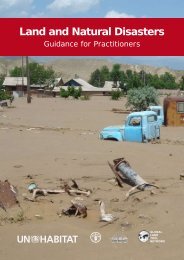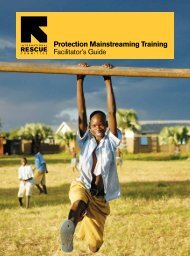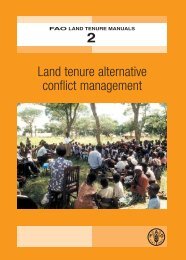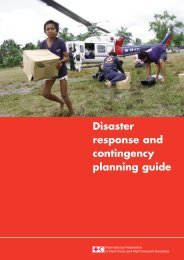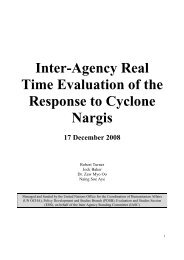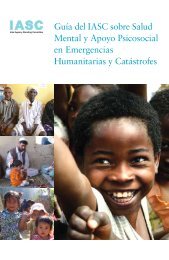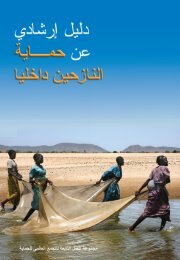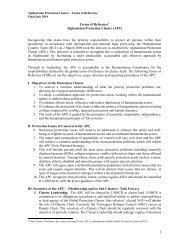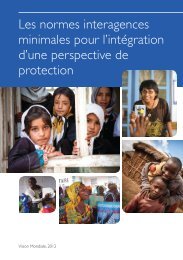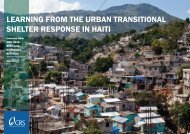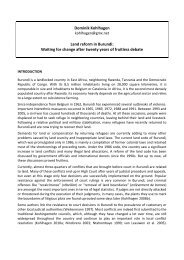Mid-Year Review of the Work Plan for Sudan 2012 - Global ...
Mid-Year Review of the Work Plan for Sudan 2012 - Global ...
Mid-Year Review of the Work Plan for Sudan 2012 - Global ...
You also want an ePaper? Increase the reach of your titles
YUMPU automatically turns print PDFs into web optimized ePapers that Google loves.
UNITED NATIONS AND PARTNERSINTRODUCTIONMID YEAR REVIEW | SUDAN WORK PLAN <strong>2012</strong>3EXECUTIVE SUMMARYThe <strong>Mid</strong>-<strong>Year</strong> <strong>Review</strong> <strong>of</strong> <strong>the</strong> <strong>2012</strong> <strong>Sudan</strong> Humanitarian <strong>Work</strong><strong>Plan</strong> (HWP) comes at a time <strong>of</strong> growing concern <strong>for</strong> <strong>Sudan</strong>.The first half <strong>of</strong> <strong>2012</strong> witnessed a serious escalation <strong>of</strong> tensionsbetween <strong>Sudan</strong> and South <strong>Sudan</strong> over outstanding ComprehensivePeace Agreement (CPA) issues and South <strong>Sudan</strong>’sdecision to halt transporting oil through <strong>Sudan</strong>. The heightenedtensions spilled over into conflict and culminated in <strong>the</strong>occupation <strong>of</strong> <strong>the</strong> Higlig area by South <strong>Sudan</strong>ese armed <strong>for</strong>cesand destruction <strong>of</strong> key oil installations in April. This caused yetmore displacement and vulnerability in <strong>the</strong> border areas.<strong>Sudan</strong>’s economic situation continued to deteriorate generallydue to <strong>the</strong> loss <strong>of</strong> oil revenues, high levels <strong>of</strong> inflation, a weakeningcurrency and poor harvests. Toge<strong>the</strong>r, <strong>the</strong>se factors haveraised prices <strong>of</strong> basic food items and increased concerns overfood security throughout <strong>the</strong> country. This comes at a time <strong>of</strong>decreased government revenues: government developmentspending and transfers to <strong>the</strong> states <strong>for</strong> basic service deliveryand social safety nets have decreased by 26% and 20% respectivelycompared to this time last year.Meanwhile, <strong>the</strong> continuation <strong>of</strong> armed conflict in South Kord<strong>of</strong>anand Blue Nile between Government <strong>for</strong>ces and <strong>the</strong> <strong>Sudan</strong>People’s Liberation Movement – North (SPLM-N) has been amajor cause <strong>for</strong> concern. The conflict has continued to affectcivilians. Some 655,000 people, according to estimates, havebeen displaced or severely affected in both states. There aresignals that <strong>the</strong> humanitarian situation is deteriorating fast inSPLM-N held areas which have been cut <strong>of</strong>f <strong>for</strong> many monthsand where <strong>the</strong>re are reported to be severe food shortagesand few functioning health services. In addition to <strong>the</strong> largenumber <strong>of</strong> people who are internally displaced from <strong>the</strong> fightingin South Kord<strong>of</strong>an and Blue Nile, by <strong>the</strong> end <strong>of</strong> June <strong>2012</strong>over 200,000 refugees had fled to South <strong>Sudan</strong> and Ethiopia.The United Nations (UN) and its humanitarian partners havebeen able to provide some assistance in Government-heldareas, but Government restrictions have made it impossibleto deliver food and o<strong>the</strong>r emergency assistance to peoplein SPLM-N areas despite a tripartite proposal <strong>of</strong> <strong>the</strong> AfricanUnion, <strong>the</strong> League <strong>of</strong> Arab States and <strong>the</strong> United Nations <strong>for</strong>access to all conflict-affected people in <strong>the</strong> two states.In Abyei, while <strong>the</strong> majority <strong>of</strong> <strong>the</strong> 109,000 people who weredisplaced in 2011 have not yet returned, 9,000 people havereturned to areas north <strong>of</strong> <strong>the</strong> Bahr Al Arab/Kiir River by <strong>the</strong>end <strong>of</strong> June. The recent withdrawal <strong>of</strong> all <strong>Sudan</strong>ese and South<strong>Sudan</strong>ese <strong>for</strong>ces from <strong>the</strong> area is a positive development andmay pave <strong>the</strong> way <strong>for</strong> a large-scale return in <strong>the</strong> months ahead<strong>for</strong> <strong>the</strong> remainder <strong>of</strong> <strong>the</strong> displaced.In Darfur, revised estimates indicate that <strong>the</strong>re were a total<strong>of</strong> some 178,000 voluntary returns <strong>of</strong> refugees and internallydisplaced people between January 2011 and <strong>the</strong> end <strong>of</strong> March<strong>2012</strong>, illustrating <strong>the</strong> fact that <strong>the</strong>re is relative stability in manyparts <strong>of</strong> Darfur, even though fighting has continued in someparts <strong>of</strong> <strong>the</strong> region. The inauguration <strong>of</strong> <strong>the</strong> Darfur Regional<strong>Sudan</strong> <strong>2012</strong> HWP at mid-year: Key parametersDuration January - December <strong>2012</strong>Key milestones in <strong>2012</strong>Target benefciariesMay - Sept: hunger seasonJun - Aug: planting seasonJun - Oct: rainy seasonNov: harvestNov: winter planting season• 4.0 millionTotal funding requestFunding request per beneficiary$ 1,052,695,296 $263Authority (DRA) in February demonstrated <strong>the</strong> willingness <strong>of</strong><strong>the</strong> Government <strong>of</strong> <strong>Sudan</strong> to implement <strong>the</strong> Doha Document<strong>for</strong> Peace in Darfur. The DRA will focus its ef<strong>for</strong>ts on ensuring<strong>the</strong> sustainability <strong>of</strong> returns and leading <strong>the</strong> reconstruction anddevelopment <strong>of</strong> Darfur. The Government's financial supportto <strong>the</strong> DRA will be critical to ensure <strong>the</strong> DRA can fulfill itsmandate. Incidents <strong>of</strong> fighting and new displacement in someparts <strong>of</strong> Darfur and concerns over food security after a poorharvest season are potent reminders <strong>of</strong> <strong>the</strong> challenges ahead.The initialling <strong>of</strong> a framework agreement between <strong>Sudan</strong> andSouth <strong>Sudan</strong> on <strong>the</strong> status <strong>of</strong> <strong>the</strong>ir nationals in <strong>the</strong> two countrieswas a positive development. The deadline <strong>for</strong> people<strong>of</strong> South <strong>Sudan</strong>ese origin to regularize <strong>the</strong>ir status in <strong>Sudan</strong>ended on April 8 amid uncertainty, as most people <strong>of</strong> South<strong>Sudan</strong>ese origin remain undocumented. The embassy <strong>of</strong>South <strong>Sudan</strong> has now commenced processing emergencyidentification documentation but a significant backlog exists.Returns to South <strong>Sudan</strong> during <strong>the</strong> first half <strong>of</strong> <strong>the</strong> year werehindered by insecurity in <strong>the</strong> border areas.In view <strong>of</strong> <strong>the</strong>se developments, significant humanitarian needsremain in <strong>Sudan</strong>. Humanitarian organizations are planningto assist a total <strong>of</strong> four million people during <strong>the</strong> second half<strong>of</strong> <strong>2012</strong>, which is in line with <strong>the</strong> estimated figure in <strong>the</strong> <strong>2012</strong>HWP. However, increased vulnerability beyond current levelsis a distinct possibility during <strong>the</strong> second half <strong>of</strong> <strong>the</strong> year andhumanitarian partners will continue to monitor <strong>the</strong> situationclosely to identify new needs as <strong>the</strong>y emerge. Contingencyplans have been updated and can be activated in <strong>the</strong> event <strong>of</strong>a worst-case scenario unfolding.While needs remain high in <strong>Sudan</strong>, <strong>the</strong> humanitarian communityis facing an increasingly difficult operating environment in<strong>the</strong> country. Most recently, <strong>the</strong> Government asked seven internationalnon-governmental organizations (INGOs) to ceaseoperations and close <strong>the</strong>ir <strong>of</strong>fices in eastern <strong>Sudan</strong>, which willaffect up to 600,000 people receiving assistance. Humanitarianaccess to South Kord<strong>of</strong>an and Blue Nile continues to beextremely restricted <strong>for</strong> international organizations, with <strong>the</strong>Government insisting that <strong>the</strong> bulk <strong>of</strong> assistance to <strong>the</strong>se areasbe channelled through national organisations. Such organizationshave responded, but generally lack <strong>the</strong> capacity to mounta comprehensive, large-scale response.



